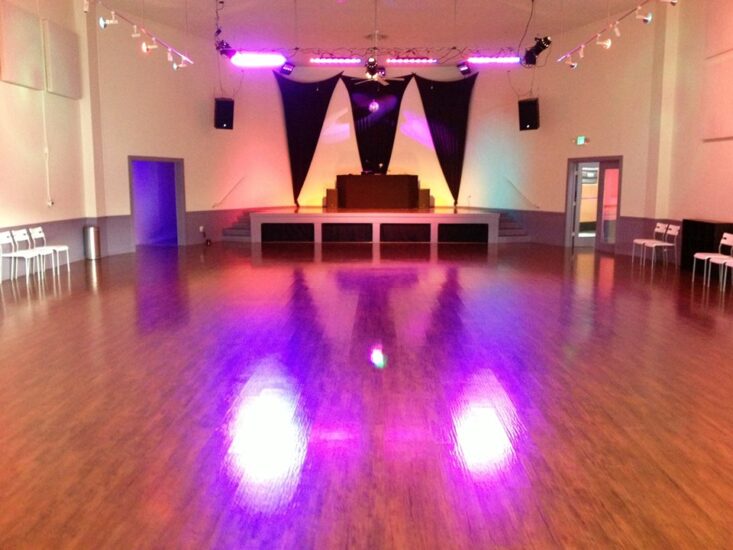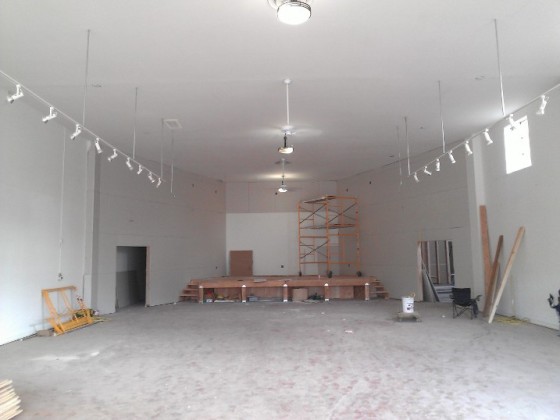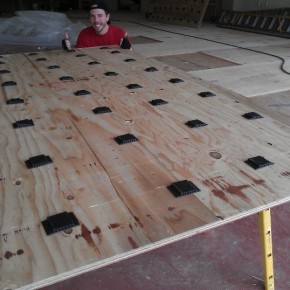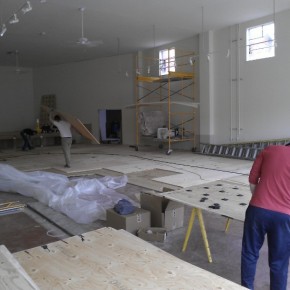Have you ever wondered why you are able to jump at Pulse without any joint problems, but as soon as you take a class somewhere else your knee swells, your low-back pain flares up, or your feet ache? While we would like to say that it is just because of the #pulsemagic people talk about on social media, the real answer is that it is because we have special shock-absorbing floors.
When we first dreamt of our own permanent location, we knew there were certain elements needed to create the type of class experience we wanted both as instructors and as students. In addition to the obvious elements that are apparent when you first walk-in, such as: no mirrors, nightclub-style lighting, an amazing sound system, and a light tech on stage for the cardio classes, we had great flooring at the very top of the list. We knew from experience that the proper flooring, while not the first thing people may notice about their classes, was the one element that could make the biggest difference.
Our requirements for our floor seemed quite simple, we wanted something that would provide the right balance of traction and glide, be extremely durable, and also be gentle on people’s joints. We quickly discovered, though, that finding that material was not an easy task. We knew from experience that the hardwoods we had danced on at various gyms were prone to changing texture based on the amount of humidity in the room. The floors would often swell in the beginning of class and become sticky, causing people to hurt themselves when they would attempt to pivot and their foot would get stuck in place. Later, as the humidity built up throughout class, the floors would develop a layer of condensation that would make them dangerously slick.
If hardwoods weren’t the answer, then what was? We spent weeks asking this question of flooring experts in the Portland area and researching what other fitness studios were using. Everyone seemed flummoxed by our requirements. One flooring material had the right balance of traction and glide but was easily dented. Another one was durable but not good for jumping. Finally, we discovered that we needed to approach it as two separate problems to solve. We needed to create the right sub-flooring to protect joints, and find the right top-flooring for the proper surface.
With the help of Avenue Flooring and our contractor we were able to find the perfect solution for the sub-floor by building the floor in the same manner as which NBA basketball courts are made. By placing small rubber feet every 12 inches and then floating two layers of plywood over the feet, we were able to get the bounce we wanted. This amount of bounce meant that every time someone jumped, the floor would help to take up the impact instead of their joints.
At the same time, we discovered commercial grade LVT for the top-flooring. This flooring promised to always stay consistent throughout class, so as long as someone’s shoes felt like they had the right amount of slide for the first song, they would continue to feel good all the way to the last song. In addition, it was flooring that wouldn’t dent. At the time we were thinking most about parties and events—that people with high-heels could be on the floor without causing divots. Thankfully, it also means that people can rock out with drumsticks as much as they like in Pound without worrying about scratching, denting, or otherwise damaging the floor.
Next time you are in, check out how the floor bounces a little as people are jumping on it. In addition, play around with your shoes until you find the ones that give you just enough traction. Once you find those shoes, the floor will always feel great and will be just another piece of the #pulsemagic.




